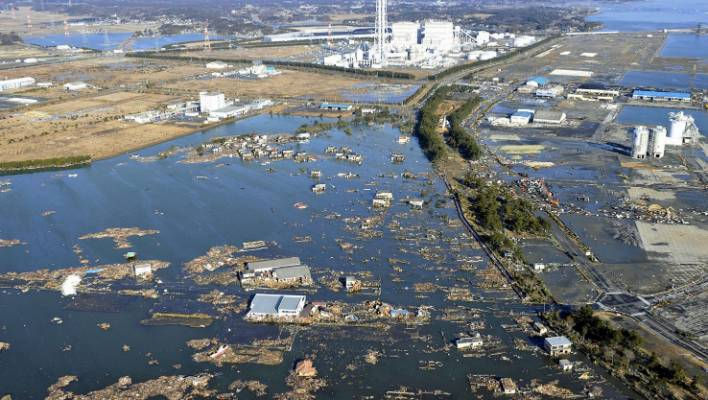Fukushima Update
- Danielle Klaff
- Apr 9, 2019
- 4 min read
Updated: May 28, 2019

The Fukushima nuclear disaster showed us once again that nuclear reactors are fundamentally dangerous.
Not only do they cause significant damage to the environment, the health of populations and to national economies, the heavy financial cost of a meltdown is inevitably borne by the public, not by the companies that designed, built, and operated the plants.
None of the world’s 436 nuclear reactors are immune to human errors, natural disasters, or any of the many other serious incidents that could cause a disaster. Millions of people who live near nuclear reactors are at risk.
The lives of hundreds of thousands of people continue to be affected by the Fukushima nuclear disaster, especially the 160,000 who fled their homes because of radioactive contamination, and continue to live in limbo without fair, just, and timely compensation. They have only a false hope of returning home, yet the Japanese government is eagerly pushing to restart reactors, against the will of its people, and without learning true lessons from Fukushima.

Evacuees ‘ Health Problems
Nearly 70 percent of evacuees from areas around the damaged Fukushima No. 1 nuclear power plant have family members complaining of physical or mental problems, a recent survey showed.
Released by the Fukushima prefectural government, the survey covering 2014 revealed that 66.3 percent of households that fled the disaster area–after the nuclear crisis triggered by the March 2011 Great East Japan Earthquake and tsunami–have at least one member suffering health problems. The figure was 67.5 percent in the previous survey covering 2013.
The survey covered about 20 categories, such as the state of the lives of the evacuees, their health conditions and their intent to return to their homes.
Asked about what bothers them, 57.9 percent said they cannot sleep well. While 56.6 percent said they are unable to enjoy their daily lives as they did before the disaster, 49.3 percent said they tire more easily.
Households that are still in temporary housing or rented apartments for evacuees accounted for 62.1 percent, a 10-percentage-point decrease from the previous survey. Meanwhile, 19.7 percent–10 points higher than the first study–said they live in their own homes.

Seawater Contamination
Over seven years after the Fukushima Daiichi nuclear plant in Japan was devastated by a tsunami, radioactive water is still leaking into the ocean, spelling more trouble for the local fishing industry along the coast of Fukushima prefecture.
Recently the plant's owner, Tepco, finally admitted what many had suspected – that the plant was leaking. Now Japan's Nuclear Regulatory Authority is calling the situation an emergency, and says Tepco's plans to stop the leak are unlikely to work.
The problem is that groundwater is entering the damaged reactor buildings, picking up radioactive elements like caesium and seeping out to sea. Tepco has spent months pumping the water to the surface and storing it in tanks, and sinking wells to lower the water table.
Previous releases of Fukushima contamination into the Pacific have drawn protests by Japanese fishermen and environmental groups. Fish caught off the coast of Fukushima have been subject to testing for radiation before being sold.
Contamination from Fukushima has been measured off the western coasts of the U.S. and Canada, signalling the need for more monitoring, according to the Woods Hole Oceanographic Institution, the largest private non-profit research group looking at the world’s oceans.
“Inspectors found 650 Becquerel’s per liter of beta radiation, which includes the contaminant strontium-90, Mayumi Yoshida, a spokeswoman for the utility known as Tepco, said. That’s more than 21 times government safety guidelines covering sea water near the plant for strontium-90, which has been linked to bone cancer.”
“The Fukushima site now has more than 338,000 metric tons of water stored in more than 1,000 tanks, with additional water remaining untreated in reactor basements and service tunnels.
Levels of toxic water are rising at a rate of 400 tons a day as groundwater seeping into basements mixes with cooling water that has been in contact with highly radioactive melted reactor cores.” (Bloomberg news - by Jacob Adelman & Yuji Okada)

Alternative Energy
On June 22 2015, Japan officially unveiled today its 7 megawatt (MW) wind turbine, the world’s largest offshore turbine to date. It is slated to be operational by September 2015.
The Fukushima Wind Project, located about 12 miles off the coast of Fukushima, installed a 2 MW wind turbine in November 2013. The turbines are part of a pilot project led by Marubeni Co. and funded by the Japanese government with research and support from several public and private organizations, including the University of Tokyo and Mitsubishi Heavy Industries.
The new turbine, which will tower 220 meters above the sea, will transmit electricity to the grid via submarine cable, according to The Japan Times. The government has allocated 50 billion yen ($405 million) for the project, which allows turbines to float in areas that are “too deep for traditional towers fixed to the seafloor,” says Bloomberg News. There are plans to add a third floating turbine with a generating capacity of 5 MW later in the year, which will bring the total output capacity of the project to 14 MW.







Comments